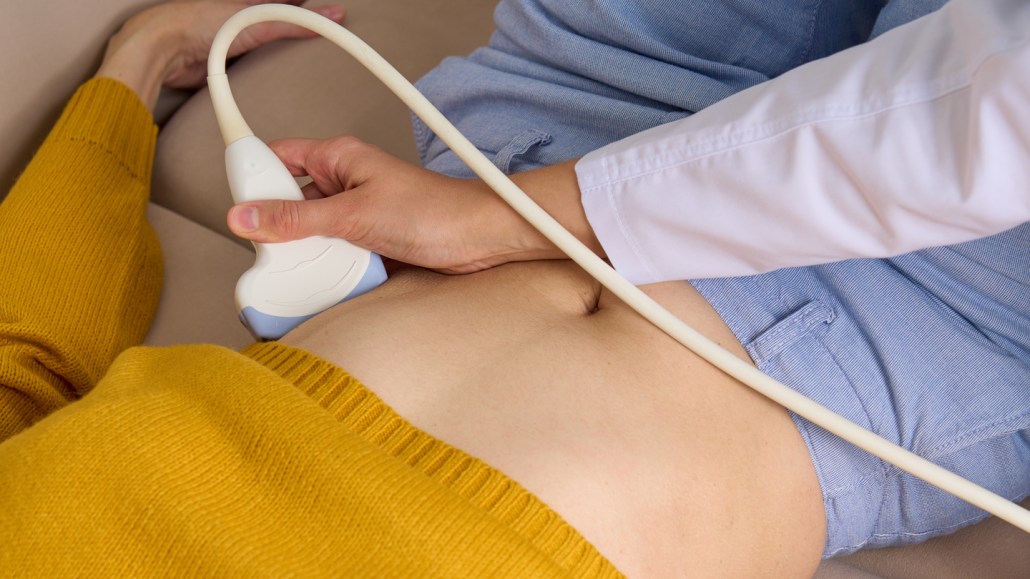Stimulating spleens with ultrasound hints at a treatment for inflammation
It’s yet to be seen if the approach, tested in rats and human blood samples, works inside people

Targeting the spleen with an intense kind of ultrasound stimulation may show promise in reducing signs of inflammation.
NataBene/iStock/Getty Images Plus
- More than 2 years ago
We typically think of using ultrasound to take pictures of our organs and tissues to check if they are healthy. But a slight tweak to the tool might lead to treatments for certain diseases, scientists suggest.
Stimulating people’s spleens with ultrasound waves appears to briefly reduce a sign of inflammation in samples of their blood, researchers report in the May–June issue of Brain Stimulation. If validated in further studies, the results could lead the way toward a noninvasive therapy for chronic inflammation, the team says.
The ultrasound waves used in the new study are more intense than what’s used to generate images, and they’re specially designed to stimulate nerves. Past research on targeting different brain areas or the spinal cord with such intense sound waves has shown potential for treating neurological diseases. And when directed at the liver, the technique — called focused ultrasound stimulation, or FUS — has helped to reduce signs of diabetes in mice, rats and pigs.
It “is a pretty active area of research right now,” says neurophysiologist Stavros Zanos of Feinstein Institutes for Medical Research in Long Island, New York.
Zanos and his team wondered whether FUS targeted at the spleen could help to tamp down inflammation. The spleen stores and filters blood (SN: 7/30/09). When something goes awry anywhere in the body and a distress signal is sent via the blood, immune cells in the organ know about it. So do cells in the splenic nerve, which reacts to the signal by telling immune cells how strong of an inflammatory response to initiate.
Zanos’ group recently showed that targeting rodents’ spleen with FUS appeared to reduce inflammation. “It was about time to test [the technique] in humans to see if it has any chance of working,” he says.
The team administered FUS to 60 healthy people, in slightly different locations of the spleen and at different intensities. Researchers then exposed a blood sample drawn from each of 60 participants who had FUS and 10 who did not to a type of toxin that would normally trigger an inflammatory response. (For safety reasons, the team could not directly expose the participants to the toxin.)
One hallmark of an inflammatory response is that white blood cells release a blood protein called TNF, tumor necrosis factor. The more TNF, the larger the response. All samples from participants who received FUS, regardless of the intensity or location, had about a third the amount of TNF — 300 picograms per milliliter on average — than samples from individuals who had not had the treatment, suggesting the treatment dampened overall immune response. The effect seen in the blood sample lasted more than two hours, and there were no safety issues with FUS, the team reports.
“This really portrays the strength of the ultrasound as a noninvasive intervention that can successfully modulate neurons,” says Jan Kubanek, a biomedical engineer at the University of Utah in Salt Lake City who was not involved with the research.
But Kubanek has reservations about the applicability of the results because the inflammation test was done outside the body. He says he would like to see results showing that inflammation in the body drops after FUS, especially in people with chronic inflammation.
Practical challenges, such as the delivery and frequency of FUS treatments, could also stand in the way of spleen-targeted FUS leaving the lab, he says.
Zanos agrees. “There are so many questions of how applicable this therapy will be to treating real patients, even if it’s effective,” he says. “I think it’s an important thing for people to remember, especially patients who expect a lot from these new technologies,” he says. “We shouldn’t overpromise.”







